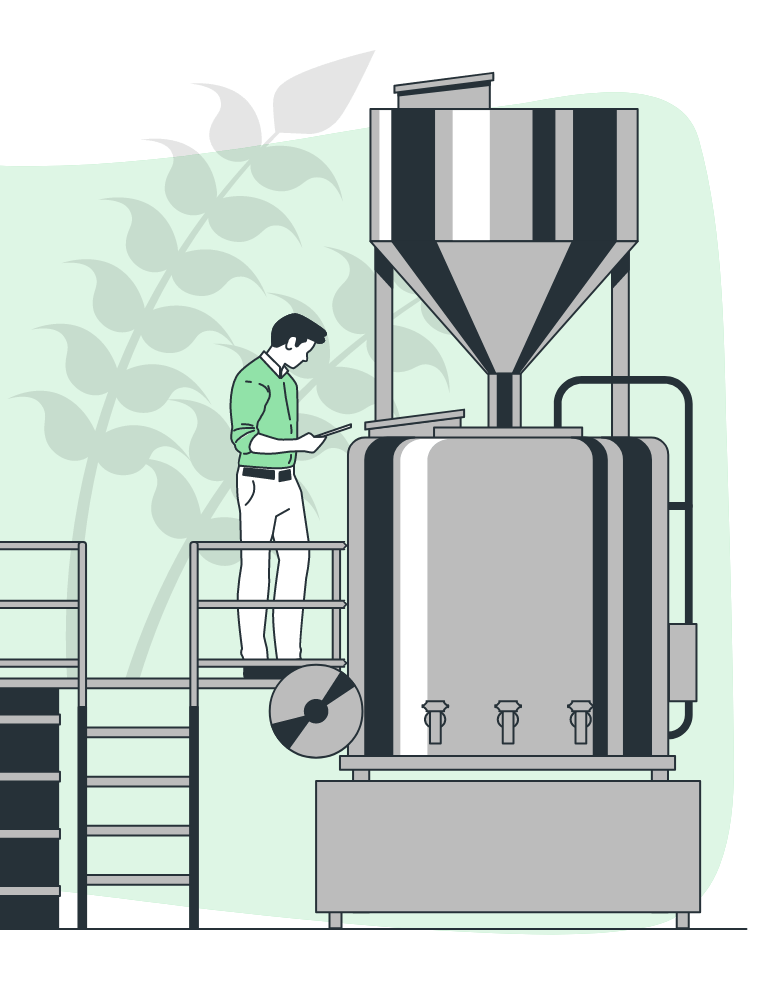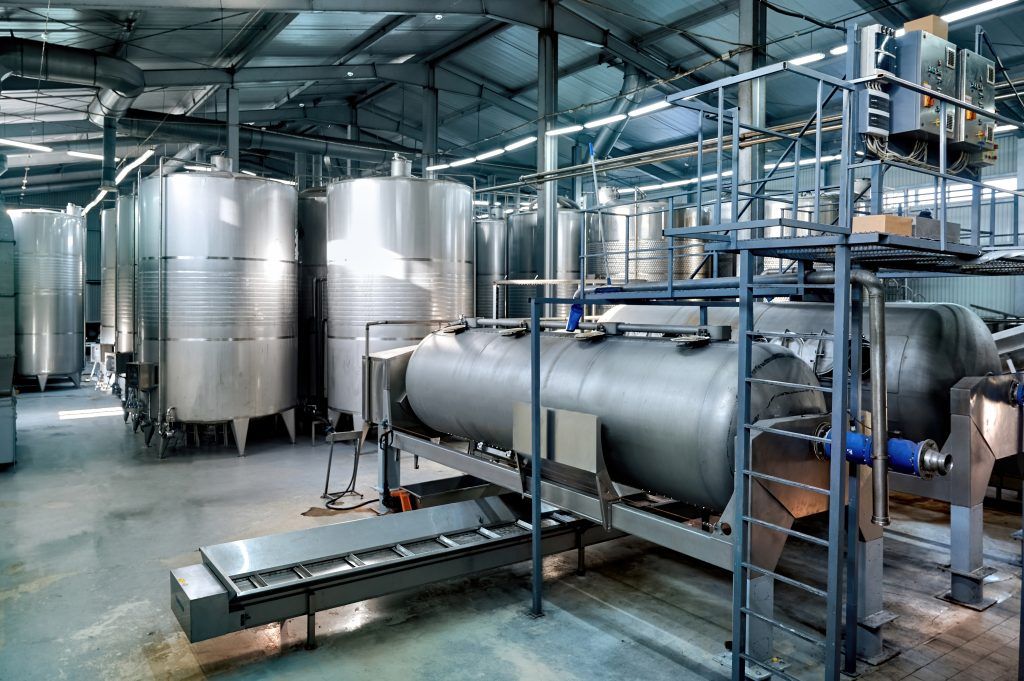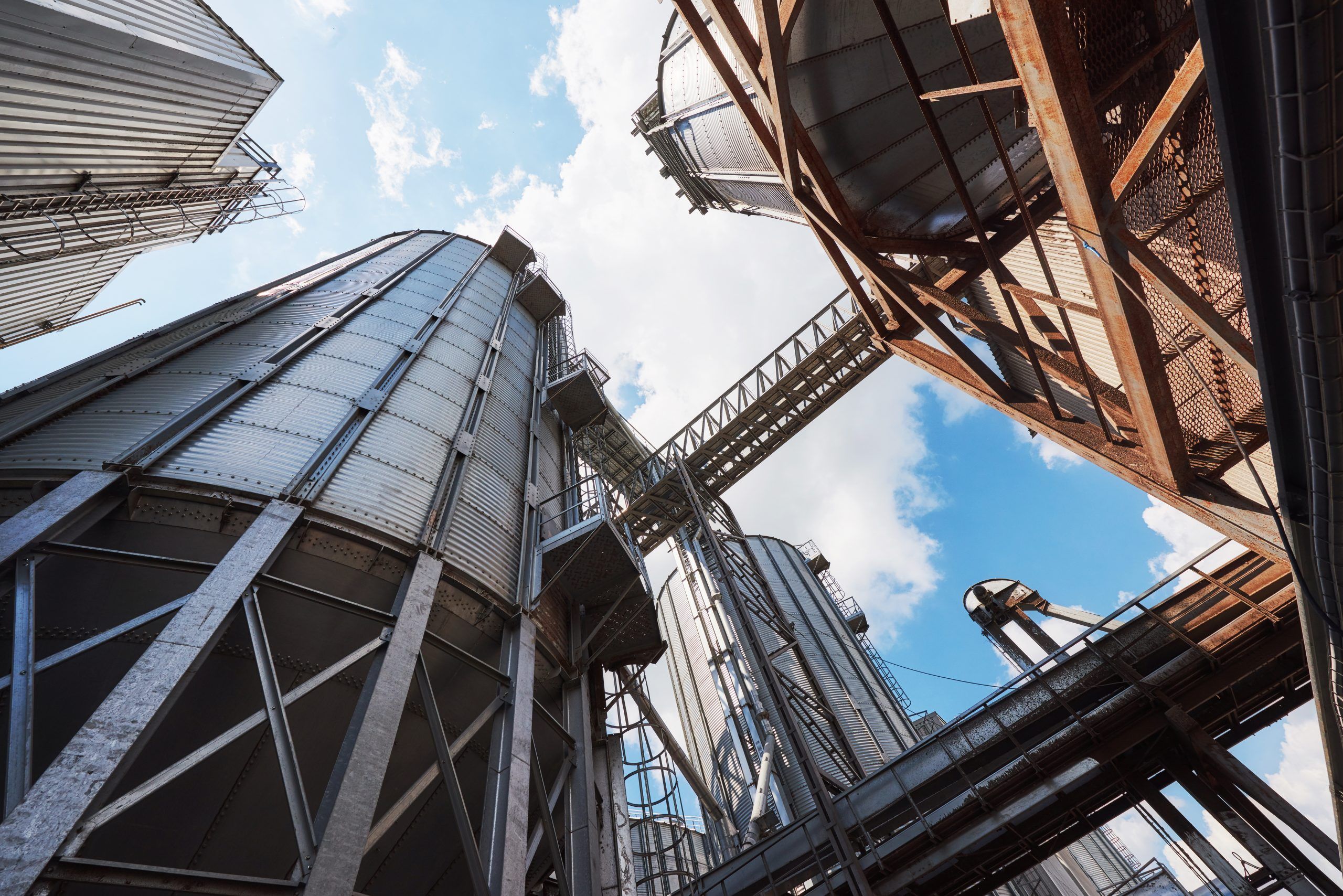IGESA Valencia 2008 S.L.
offers you a comprehensive technical and legal service, capable of covering all your needs so that your company obtains maximum technical, social, legal and economic profitability.
About Our services
The opportunity to have a multidisciplinary team of technicians trained in the different areas of knowledge necessary for the development of various projects

The composting technique is described as biological and oxidative, since it is based on the action of various aerobic microorganisms that act successively on the initial organic matter, producing a series of reactions that raise the temperature during the process, reduce the volume and weight of the waste and cause its humification and darkening.
The main objectives of the fermentation process of the organic fraction of waste are:
- Hygienisation of organic matter
- Reduction of odours
- Reduction of the volume of the original material
- Stabilisation and homogenisation of the organic matter
COMPOST
Composting is a process of aerobic fermentation of organic matter and experience with it is extensive. The pillars on which it is based are well defined, as the process has been documented since the 1st century B.C. Since then, farmers have followed this natural practice by using the transformed matter as fertiliser for crops.
Composting is defined as a dynamic, biological, aerobic and therefore thermophilic process, which requires: biodegradable organic matter, an initial microbial population that will allow the process to develop and optimal conditions for the process to take place.
Factors involved in the composting process
The most important variables that affect the composting system are classified in two types:
- – Monitoring parameters of the process: those that must be followed throughout the process and controlled so that they are between the adequate values for each phase to develop properly: temperature, humidity, aeration and ph.
- – Parameters relating to the nature of the substrate: which must be measured and controlled so that their values are correct, mainly at the beginning of the process: particle size and the Carbon/Nitrogen ratio.
Nowadays it is necessary to control both the production process and the final product to guarantee optimum quality and minimum costs.

Composite systems
There are different composting systems or technologies, the objective of all of them being to transform waste into a stable humic material and to reach the conditions considered necessary to eliminate pathogenic microorganisms, fungi, spores, seeds and other undesirable organisms in the final product. In this way we will obtain a specialised material with characteristics that allow us to apply it to the soil and/or market it in compliance with the fertiliser regulations, RD 506/2013, of 28 June, on fertiliser products.
Composting systems are differentiated by the way air is incorporated, temperature control, mixing or turning the material and the duration of the process. The selection of the system will depend on the needs, available resources and environmental conditions, among other factors.

CLOSED SYSTEMS
In these systems the waste is processed in static or dynamic installations, which are known as reactors. These systems range from simple containers to very complex systems combining mechanical agitation and forced aeration of the waste to be composted. In general terms, the materials are placed in a specially designed vessel or container, in which mainly the active or thermophilic phase of the process takes place. They can be vertical or horizontal, the horizontal ones can be configured in channels, cells, containers or tunnels, and depending on whether they incorporate mixing functions, they can be static or dynamic.
– Vertical reactors
– Horizontal reactors
These are generally metallic structures, cylindrical or rectangular in shape, where certain parameters, such as humidity, aeration, temperature, etc., are kept under control. This type of system accelerates the initial stages of fermentation. When these stages are completed, the material is removed from the reactor and stockpiled for maturation in the open air or in open sheds. Reactor composting systems are generally industrial systems and their costs are high. They all have an odour abatement system with a compost biofilter and leachate recirculation.
One of the main advantages of these systems is that they considerably reduce composting surfaces and achieve better control of fermentation parameters and odours. In addition, although they require higher installation costs than open systems, they have the advantage of being faster.
OPEN SYSTEMS
These are the most traditional composting systems and are applied in rural areas and, in general, where land is plentiful. They are low cost and relatively simple technology:
– Turned windrows
– Static windrows with forced aeration
– Combined systems
In these composting systems the waste mass is arranged as a windrow. The ideal temperature of a windrow is determined by its ability to produce and maintain the required temperature and allow oxygen to reach the centre point of the composting mass. Generally, the height varies between 1 m and 3 m, with a width of up to approximately 4-5.
PRODUCTS OBTAINED FROM COMPOSTING. COMPOST
Compost is the product obtained after the decomposition of organic matter in the composting process. Compost must be a harmless product, free of phytotoxic substances, and rich in nutrients: nitrogen, phosphorus, potassium, magnesium, calcium, iron and other trace elements.
The final quality of the compost depends on several factors, among which the following stand out:
– Type of material being composted.
– Source and collection of the material
– Development of the composting process
– Further selection at the plant
– Treatment of the waste (type of technology, equipment, operation, organisation, etc.).
Compost is the product obtained after the decomposition of organic matter in the composting process. Compost must be a harmless product, free of phytotoxic substances, and rich in nutrients: nitrogen, phosphorus, potassium, magnesium, calcium, iron and other trace elements.
The final quality of the compost depends on several factors, among which the following stand out:
– Type of material being composted.
– Source and collection of the material
– Development of the composting process
– Further selection at the plant
– Treatment of the waste (type of technology, equipment, operation, organisation, etc.).

Quality is not only to be controlled in the final product, as it will depend entirely on the controls carried out on the raw materials as well as during the process. The different materials that can be composted determine the types of compost that can be obtained. This diversity increases the difficulty of establishing systems to assess the quality of the final product.
There are many possible uses for compost and the requirements for each of them are different. It is important to establish what kind of characteristics are most important to assess when the final product is produced for a specific purpose.

In many cases, as societies grew, some actions taken by them to achieve environmental benefits had a long-term negative impact on other aspects of the quality of their environment. An example of this is the widespread application of DDT to control agricultural pests in the years following World War II. While the agricultural and health benefits of the chemical proved to be exceptional (harvests increased dramatically, thereby substantially reducing the incidence of world hunger, and malaria was controlled more effectively than ever before), numerous species were pushed to the brink of extinction due to DDT’s impact on their reproductive cycles. The book Silent Spring, in which Rachel Carson offers a vivid narrative of these events, marks the birth of the modern environmental movement and the development of the current branch of “environmental engineering”.
Various societies have long generated conservation movements and laws to restrict public actions that might harm the environment. Notable examples of this are the laws that decreed the construction of sewers in London and Paris in the 19th century, and the creation of the US national park system in the early 20th century.
Today, environmental engineering plays an important role in the development of projects, which are subject to environmental impact assessment processes.
In short, the main task of environmental engineering is to protect the environment from further degradation, to preserve those parts of it that are in good condition, and to improve and revitalise it where necessary.
Environmental Engineering
Since the health and well-being of a population is apparently closely related to the quality of its environment, people have applied certain principles to try to improve the latter. The Romans built aqueducts to prevent droughts and provide the city of Rome with a source of clean, healthy water. In the 15th century, Bavaria created laws to restrict development and degradation of alpine areas critical to the region’s water supply.
Modern environmental engineering had its beginnings in London in the mid-19th century, when it was established that an adequate sewerage network could reduce the incidence of waterborne diseases such as cholera.[citation needed] The introduction since then of water purification and sewage treatment has transformed waterborne diseases from major killers to rarities in industrialised countries.
